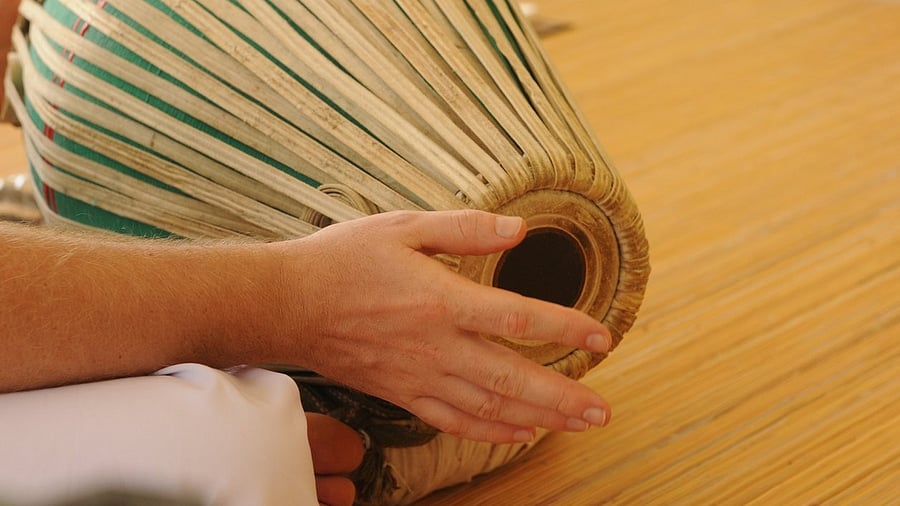
At the heart of Margazhi is Carnatic music, deeply embedded in the city’s cultural fabric.
Credit: iStock Photo
Chennai is a city of contrasts, where history, culture, and modernity exist in intriguing harmony. With its sultry weather, colonial architecture, and cultural fabric that blends tradition with gradual reinvention, Chennai has always been a muse.
During the month of Margazhi, however, it transforms into a living celebration of Carnatic music, drawing music lovers from across the globe. The Margazhi music festival, the running for over 90-plus years, turns part of the city into a cultural epicentre, where sabhas (cultural institutions) and temples resonate with classical music.
At the heart of Margazhi is Carnatic music, deeply embedded in the city’s cultural fabric. For decades, this festival has been a time when rasikas (connoisseurs) come together, not merely to listen to music, but to engage in passionate debates over ragas and compositions. These performances transcend sound, connecting listeners to something sacred, much larger than themselves.
Margazhi is a muse that welcomes both seasoned rasikas and casual listeners. Imagine sitting next to a middle-aged mami, who can effortlessly recognise the complexities of ragas like Gangeya Bhooshani or explain how adding Shuddha Rishaba to Valachi transforms it into Malayamarutham. Over coffee at the iconic Sabha Canteen, you might find a nonagenarian mama meticulously recording his thoughts in a weathered red diary, reflecting on a junior artist’s rendition of Charukesi. These moments of knowledge exchange form the essence of Margazhi — a space where music transcends performance to become a shared experience.
This year, however, the harmonious tradition of Margazhi has been marred by discord. A controversy over the Music Academy’s decision to honour a prominent musician sparked protests and divided the music community. What was once a peaceful gathering of like-minded individuals has become a battleground, with political undertones threatening to overshadow the music.
For the usual connoisseurs — the ones who occupy front rows with an air of casual expertise — this discord has caused unease. Fearful of taking sides, many have opted for discretion, leaving seats empty as a silent symbol of the growing divide. Ironically, the same sabha had a full house for the artist’s kutcheri (concert).
The empty seats may appear to be a victory for the protestors, but they are hollow. The real casualties are the lesser-known musicians — violinists, percussionists, and tambura players — whose livelihoods depend on the Margazhi season. While the controversies capture headlines, these unsung artists bear the brunt of the fallout.
Carnatic music has always been more than just an art form; it is a cultural rite of passage. In many households music was once a given — a discipline that included early morning classes, long hours of practice, and performances during festivals like Margazhi. This tradition, once confined to certain communities, has slowly opened its doors to a broader audience, as the art form transcends caste and creed.
Ironically, the very sabhas that once symbolised cultural excellence now find themselves entangled in political allegiances. What was once a milestone — a child’s arangetram (debut performance) at a prestigious sabha — has now become a reminder of how politics has infiltrated every corner of this cultural tradition. The controversy surrounding the award has turned these revered institutions into pawns in a larger political game.
The bigger question is what this divisiveness means for the future of Carnatic music. Protests and boycotts are not just battles between artists — they risk alienating the younger generation. Disillusioned by the egos and rivalries on display, many young people, eager to engage with the music, may choose to disengage entirely. If Carnatic music is reduced to a contest of pride and politics, its future is at risk.
Amid this discord, however, there are glimmers of hope. The morning lecture-demonstrations, once attended by only a handful, have seen a resurgence in popularity. Young audiences, unburdened by the political baggage of previous generations, are engaging with the music in new and exciting ways. These sessions, free from the heavy weight of rivalry, offer a glimpse of the future — one where Carnatic music is inclusive, curious, and willing to adapt. Younger artists are emerging as beacons of hope, drawing crowds and performing with camaraderie, even if not yet on the same scale as their seasoned counterparts.
Ultimately, the issue isn’t about the protests, or the individuals involved, but about the message they send to the next generation. If the legacy of these great artists becomes defined by rivalries and egos, the essence of Carnatic music could be lost. To survive, this art form, which has always transcended the mundane, must remain devoted to its core — music that honours tradition while embracing change.
Carnatic music has always adapted — from its origins in temples to grand sabha stages, it has flourished by embracing change without losing its essence. Reducing it to a contest of egos would betray its very soul. Throughout history, Carnatic music has been a bridge, uniting listeners across barriers of caste, creed, and geography. Be it the Bhakti movement or the nationalist struggle, music was never a tool for division — it was a call for solidarity and devotion. Today, Carnatic music is finding its way into global playlists through fusion collaborations and contemporary reinterpretations. These experiments, while sometimes contentious, highlights the art form’s vitality and adaptability.
As the controversy continues, one thing remains certain: the music will play on. Margazhi music season will continue, as it always has, despite the dissonance surrounding it. The music will endure because it is not defined by politics or rivalry. It is the music we must nurture, for it is the truest tribute we can offer to those who came before us.
(Kalyani Srinath is a trained-musician, and blogger. X: @TrueBlueAqua.)
Disclaimer: The views expressed above are the author's own. They do not necessarily reflect the views of DH.